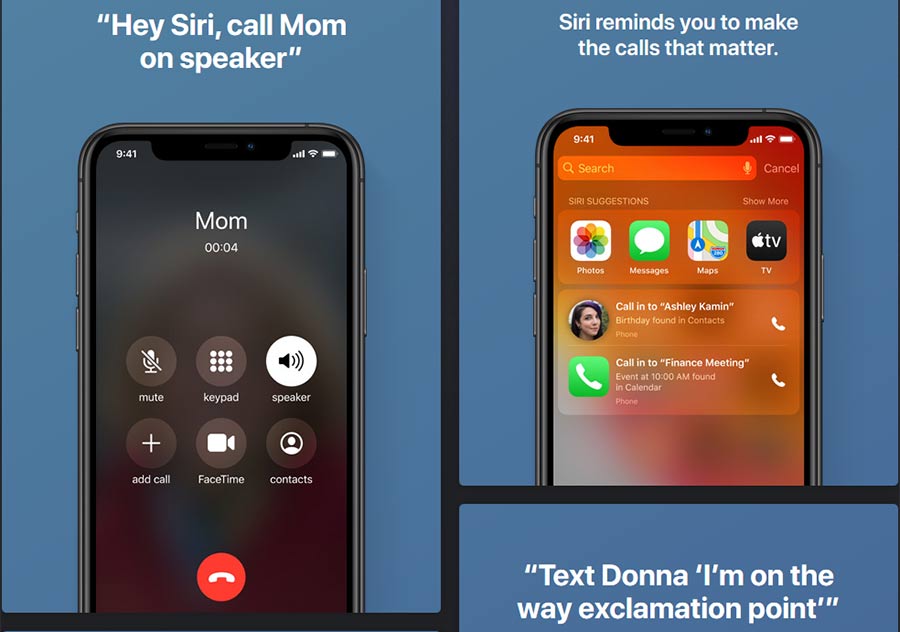I think that there are few of us that will ever forget 2020, what a rather interesting year. While public health and social challenges have been escalating globally, some rather interesting things have been happening in the hearing aid world as well. Three of the big manufacturer have introduced different technology offerings that we could see as paradigm shifts in the future. I would expect the other hearing aid brands to use the rest of 2020 to introduce some of their own new kit which probably will be just as interesting. I don't use paradigm shift lightly, by now, regular readers know me well enough to know I don't use fluffy bullshit marketing talk here. I really do believe that these technologies could change quite a bit about hearing aids moving forward. Let's talk about what they are and why I think they could change everything.

Phonak's Bluetooth Capability & Tap Control
While the new Paradise range from Phonak offers far more than just in-depth Bluetooth connectivity and Tap control, those are the things that I feel will make such a huge difference to hearing aid users moving forward. They are also the features that I expect to become ubiquitous across hearing aids over the next five years.
Dual Connection
The Bluetooth capability ensures that you can connect seamlessly to two devices at the one time and shift between them for audio and call streaming without an issue. That is a fantastic step forward for usability without hassle. I expect with the introduction of Bluetooth LE Audio across other hearing aid brands for this ability to spread.
Hands-Free
The hands-free phone call experience has just got better, it seems to have become more solid and less problematic than it once was. It appears that your caller can hear your voice on calls almost 100% of the time. Something that wasn't true with the Marvel, especially in noisier environments. Again, I expect to see hands-free systems to spread across the hearing aid brands once Bluetooth LE audio hits and I would say ReSound will probably offer an amazing system simply because of their experience with Jabra.
Tap Control
The tap control feature is pretty fantastic, it adds another layer of usability to the hearing aids without adding buttons or confusing presses of the existing buttons. More than that though, when combined with the hands-free Bluetooth system it opens up the opportunity to integrate the hearing aids further with the virtual assistant on the smartphone, be it Google, Siri, Bixby or another.
The virtual assistant and simple voice control deliver a lot of power and fun for a user. While this may not be seen as core to the function, I think it will be. Many people said six years ago that Bluetooth was not core to the function of hearing aids, look where we are now. The tap control will open up the use of the virtual assistant to users like never before. For people who are a little afraid of their phones, the virtual assistant is a godsend. To see what the virtual assistant on a smartphone can offer, read the article "Voice Assistants Could be a Godsend For Hearing Aid Users".
While virtual assistants offer real power, usability and convenience for smartphone users right now, what really fascinates me is what they could do in the future. What if the hearing aid app was integrated with the virtual assistant in a deeper way. What if more clarity in a noisier situation was a simple as saying, hey Google/Siri/Bob (I really want a Bob hahah), I need more clarity, and it changed how the hearing aids were working through the app? That would be a real game-changer.
ReSound M&RIE
ReSound's new M&RIE (Microphone and Receiver In Ear) system could well begin the move towards other brands developing a similar concept. The idea is a good one, using an extra microphone to help with better localisation calculations is an excellent idea, putting it at the entrance to the ear canal is simply genius.
The placement of a third microphone on their Reciever In Canal hearing aids in the ear canal offers them the ability to provide a more natural presentation of sound to the user. It allows them to intimately understand the head shadow effect and front to back differences. More than that, it allows them to understand how your ear and head play a part in that.
Up to now, all manufacturers have basically used something that is called Pinna Effect on all their BTE or RIC hearing aids. It's a calculated algorithm that basically spoofs it. With the introduction of the microphone in the ear canal, ReSound can work out what yours is, no spoofing. It should lead to a more normalised presentation of sound to the user, it should also offer better sound scene information that can be used to help you hear better.
The more normalised presentation of sound to the user really is the goal of most of the hearing aid brands. They understand that your brain is quite an amazing bit of kit and if they can deliver the sound to it in as a normal a manner, well then we will be cooking with gas as they say. Speaking of normal, it brings me onto the next breakthrough.
Widex Pure Sound
Widex introduced their Moment hearing aid platform earlier this year, but it kind of got swallowed up by the whole end of the world pandemic thing. So they re-introduced it recently and asked me would I like to try a pair, I am glad they did. If they hadn't, I would not have discovered exactly what their latest breakthrough meant to hearing aids. I also would have not been able to really consider it and its possible evolution as a paradigm change for hearing aids. Have I bigged it up enough? No, I haven't, really, I haven't, because the effect this breakthrough may have on the future of hearing aids is mind-boggling.
So What is it?
Pure Sound is a new processing strategy by Widex for their hearing aids, it offers a zero-delay processing strategy. That means that the amplified sound hits your eardrum at the exact millisecond that the natural sound does. It is perhaps the most normal sounding hearing aid strategy I have ever tried. I genuinely had to check several times that the hearing aids were in fact working. Because they were doing a pretty impressive job of pretending they weren't.
While they were pretending not to be there, they were also providing me the speech cues I needed to understand what was going on, even in noisier situations. I have said this several times, but I will say it again, it was a bizzarre experience.
It Shouldn't Work
When you look a little deeper into Pure Sound, you are presented with a conundrum. In essence, it takes all of the rules for good high technology hearing aids and then throws them out the window, kind of like me when I am faced with an instruction book when I know four beers and poking buttons will do!
It reduces the amplification, that means it doesn't provide as much gain as it should. It turns off the directional microphones, so basically it ignores the one thing that we know provides better speech understanding in noise and it turns off the cool features that are designed to help you hear better in noise.
So after stripping away all those lovely features, oh and giving you less amplification, it shouldn't work, right? Well surprisingly, it does, it works well. Oh, all while pretending to be not there. When Widex tested it against typical high technology hearing aids from other brands, it delivered the same results. Frankly, that's pretty mind-blowing for someone who has been in the industry for so long.
Normal Presentation
The key is believed to be a normal presentation of sound cues. Going back to what I said before, your brain is a beautiful and amazing thing. We believe that if we can deliver as normal a presentation of sound as possible, your brain will sort it out. It appears that Widex has proved that theory with Pure Sound. With zero delay and a very normal presentation of sound, they deliver a fantastic experience allowing you to get all the cues you need to work out what everyone is saying.
Just The Beginning
Widex is at the very beginning of their journey with this strategy and it doesn't work for all hearing losses. As it evolves alongside the power of hearing aid chips and deeper research, it may well become more available. I think that can only be a good thing because hitting people with less amplification should probably contribute to better preservation of the nerve endings in the inner ear.
That could be a huge breakthrough for people with profound hearing loss where their residual hearing is basically a tiny window that we pound with sound in an effort to help them hear and understand speech. I am excited for the evolution of this strategy and I will be following their work closely.
It seems like 2020 has delivered a rich source of new features and breakthroughs that will deliver wider functionality changes moving forward. Like lithium-ion rechargeable hearing aids a few years ago, these feel like changes that we will look back on as real paradigm shifts. It will be fascinating to see how they evolve and how they will be used to deliver better experiences for hearing aid users moving forward.
Like us on Facebook by clicking the button below to keep up with our latest utterances. Alternatively, if you don't like Facebook, sign up to the newsletter below. It is important to remember, a hearing aid isn't properly fitted unless they do Real Ear Measurement.










